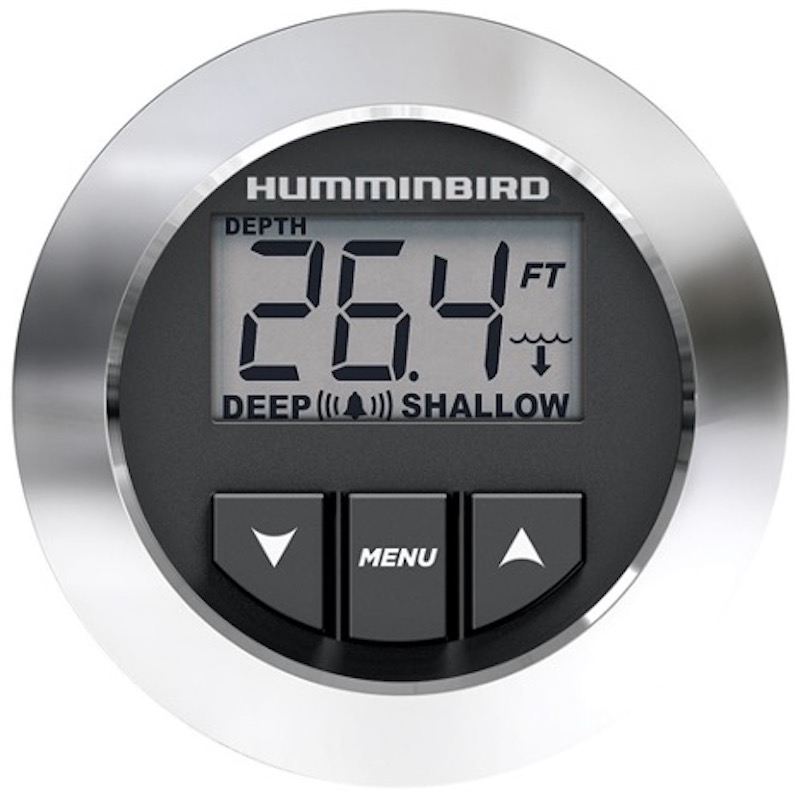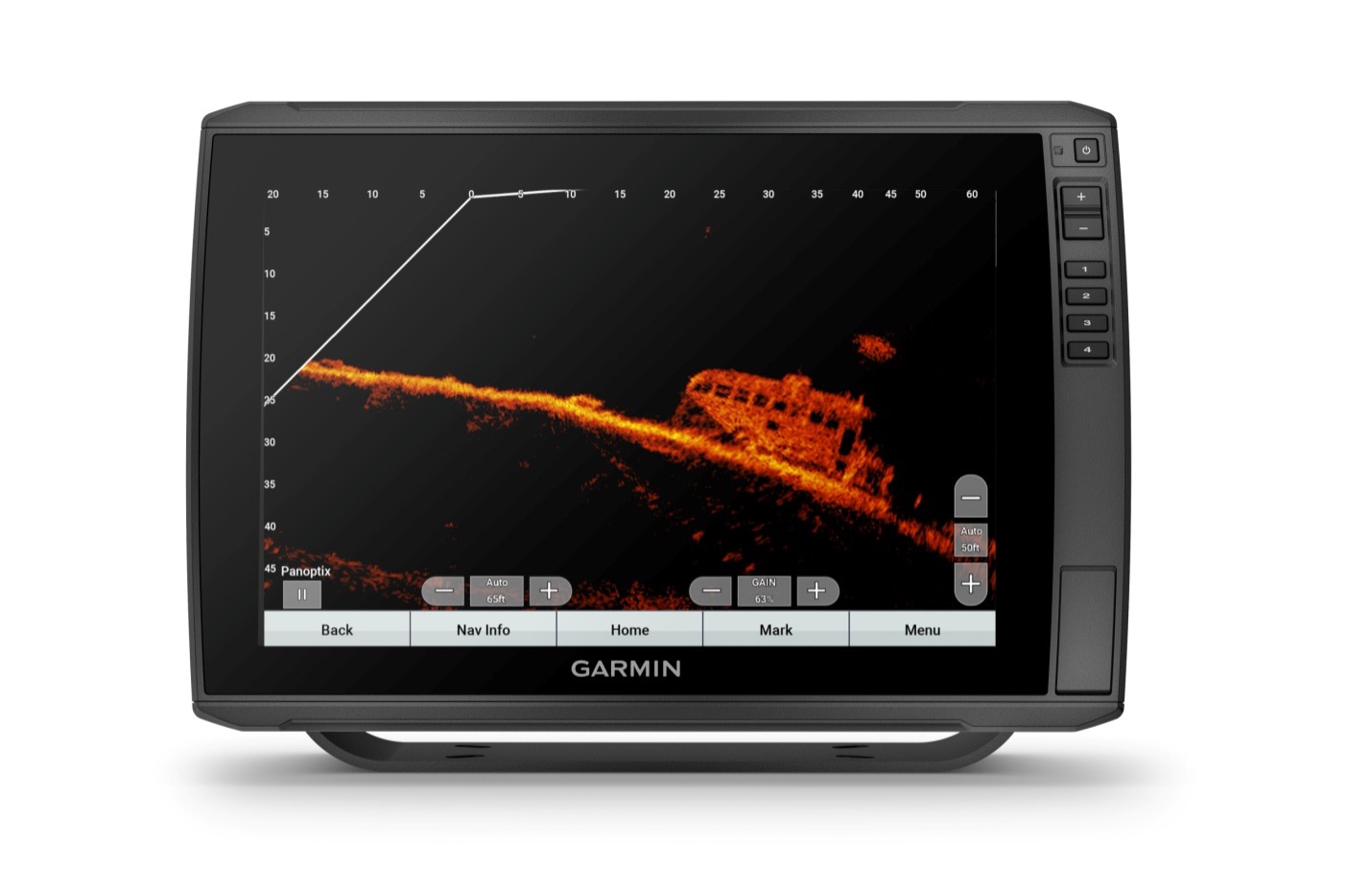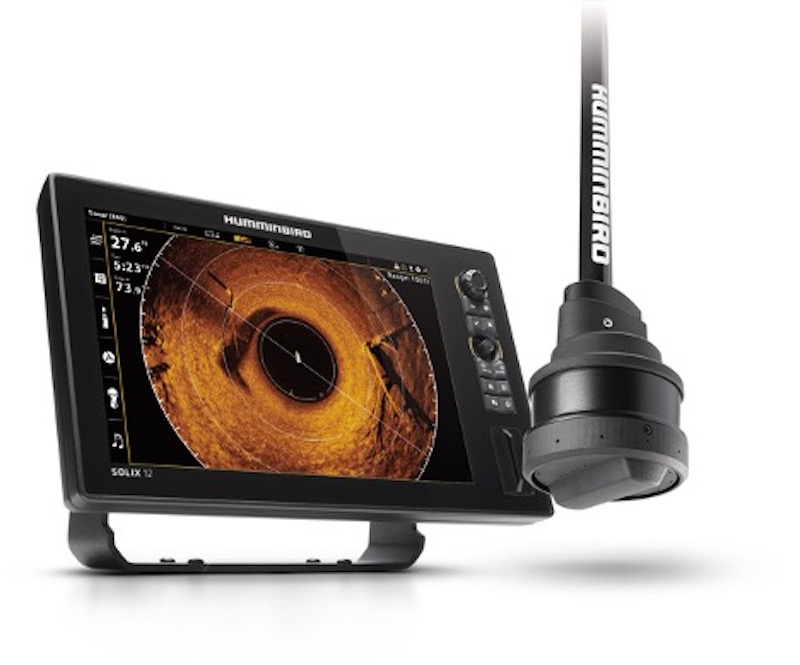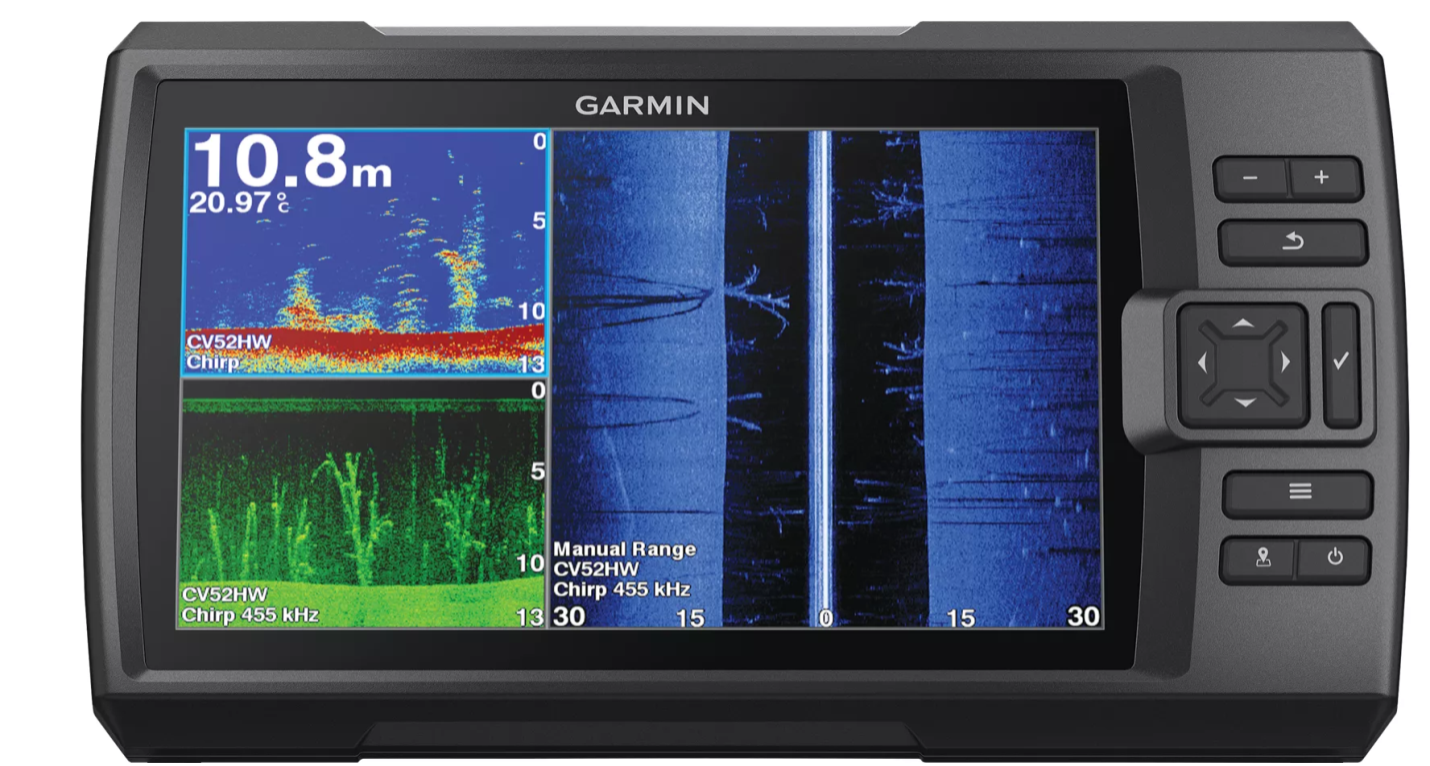Why Your Boat Needs a Depth Sounder Upgrade

If you’ve not bought a new depth sounder in the last five years, you’re missing out on a lot that lies below—as well as ahead of and beside your boat. Sonar systems—depth sounders or fish finders—have made a quantum leap in recent years.
While recreational sonar has “looked down” since its origins around 1948, systems now available from several the major players can look both to the sides of the boat and ahead of the boat, in much the same way that oceanic commercial fishing vessels do. It’s a quantum leap forward in recreational angler technology and boating navigation.
Not only that, but the modern systems have become far more sensitive, so that they can clearly see minute details of structure, individual fish and even many lures on screen. Anglers can watch a fish react to a lure and predict exactly the moment of the strike: It’s video game fishing.
In the right conditions you can distinguish a largemouth from a carp, a shark from a marlin—no more time spent trying to catch the wrong species. And you can tell the head from the tail on large fish, allowing you to position your bait right in front of them—no more spooking fish by dropping the lure behind them. You can even see bass and bream beds in as little as three feet of water.
For boaters gunk-holing in poorly-charted waters the improved accuracy and depth alarms are an important safety factor, as well.

Add to this that screen size has grown rapidly, to the point that 16 inch screens are available in units going into bass boats and bay boats, and black box combo units linked to MFD’s expand this to 24 inches for larger boats.
In bass boats and crappie boats, the sonars are being positioned on elevated mounts close to waist level so that the angler can read them like an open book as they fish.
And in fact, many anglers from bass fishers to those chasing blue marlin and swordfish a hundred miles from shore are now pursuing individual fish and watching their reaction as various baits are presented.
Saltwater models like Furuno’s CSH8LMK2 Omni have scanning technology does not need to rotate the transducer mechanically to capture a 360-degree view under the boat. The systems use a transducer that deploys downward from the hull. Multiple stacked elements transmit the sonar signal in all directions simultaneously. The combination of the processing power of the hardware and the multiple sonar elements allows the system to provide a real-time image of the water below the boat.

The captain sees the fish, adjusts course to swing the baits in front of it, and many times there’s a hookup.It can operate at speeds to 16 knots, though slower is better. It auto-retracts at 16 knots.This is a high-end setup, obviously, but a worthwhile investment on any large sportfisher whose owner is seriously into offshore big game fishing.
Blue marlin charter skippers that used get one or two strikes per day are now hooking up five or six times daily, and their business is booming accordingly.

The new depth sounders are not only much more sensitive, they’re also capable of providing clear bottom readings at much higher speeds than in the past. This is important not only to bass and walleye anglers but also to those who fish far offshore in boats that attain speeds over 60 mph when conditions are right, greatly extending the range they can cover in a day.
Basics of Sonar
First, a quick review: SONAR stands for Sound Navigation and Ranging—a transducer sends out a sound signal, the signal bounces off whatever is in the path and returns to the transducer, which then sends it to the processing unit for conversion to a visible image on the screen.
For traditional sonar, when using the lower frequency (50 kHz or 83 kHz) the width or diameter of the sonar cone of the area of bottom being scanned is roughly equal to the depth.
In the higher frequencies (typically 200 KHz to 800 KHz) the width is more like one third of the depth. While you can switch frequencies on some units, for most recreational users your fish finder will self select the most appropriate frequency.

In general, transducers with higher frequencies give the finest detail resolution and the least background noise on your screen. They also provide better imagery from a fast-moving boat, but don’t penetrate as deeply as lower frequencies. Shallow-water inland anglers generally choose higher frequencies of 200 kHz, 400 kHz or 800 kHz. Offshore anglers prefer lower frequencies.
Transducers come packaged with most low and medium range depth sounders, but are not necessarily included with high-end units—check the offer details when you shop.
Size Matters
Depthfinders are available in self-contained units from 5” screen diagonal up to 16” diagonal currently, and “black box” units can be connected to MFD’s of any size that will fit your console.
Predictably, the smaller units are more affordable, but the small images are much harder to see and the low-end models typically have less definition than the more expensive models. However, if you’re looking for a sounder for your kayak, canoe or johnboat, there are plenty for under $200 and even some for under $100.
At the other end of the scale are jumbo 16” combo GPS/Sonar units that can be connected to multiple accessories to monitor just about everything on the boat. Some of these approach the $5,000 range.
CHIRP Technology
Sonar systems with CHIRP (an acronym for Compressed High-Intensity Radiated Pulse), rather than pinging a single frequency like traditional 2D sonar, transmit a sweeping range of frequencies. With each pulse, the transducer starts vibrating at a low frequency, which is then modulated upward to a high frequency over the duration of the pulse.

A conventional sonar transmits about one percent of the time, but CHIRP sonars transmit ascending pulses that are ten times as long in duration. They put 10 to 50 times more energy into the water column, resulting in much clearer and more consistent imagery on screen. CHIRP improves bottom tracking at higher speeds and deeper depths.
Inland or Coastal
Stand-alone depth sounders are often equipped to function best either for coastal use or inland use. The coastal versions typically come with appropriate mid/high-frequency transducer and coastal charts, while the inland versions have a high-frequency transducer and inland lake charts. The price is often proportional to the size and resolution of the LCD screen.

We'll continue to look at the current crop of depth-sounders in Part II.